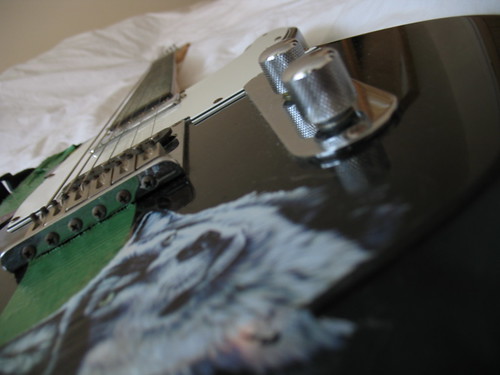 For beginner guitarists, starting to turn scales into solos can be difficult, but is important to developing as a player. Mastering scales, and being able to adapt them through major, minor and pentatonic variations means that you have the foundation on which to experiment with different chord progressions and phrasings.
For beginner guitarists, starting to turn scales into solos can be difficult, but is important to developing as a player. Mastering scales, and being able to adapt them through major, minor and pentatonic variations means that you have the foundation on which to experiment with different chord progressions and phrasings.
In this context, solos represent notes and riffs that are played over the chord progression of a song, and are relative to minor and major key scales and notes, mixing phrases within the same basic finger positions and combinations of half and whole tones. It’s worth briefly reviewing scales, chord progressions, the uses of pentatonic and blues scales, and how solos can be refined through actual songs.
Understanding Scales
Scales represent variations on a set of twelve basic notes that are are laid out in ascending to descending order of pitch on a fretboard. Whole steps and half steps comprise the difference between the notes, with a scale consisting of a sequence based on a root note, such as G, and a number of sharps and flats. A basic guitar scale is the chromatic scale, which moves down the fretboard of a root note. Other scales include major, melodic and harmonic minors, whole tones and pentatonic scales. The major, or heptatonic scale is among the most popular for songwriting, and has seven notes. For example, a D major scale can basically consist of D, E, F, G, A, B, C, and D, which is played in the pattern of a whole, whole, half, whole, whole, whole and half step.
By contrast, a pentatonic scale consists of just five notes per octave, which can be played in a major and minor key, and tend to involve less frets and changes in finger position along the fretboard. Pentatonic scales can be understood as major sales that have some notes removed, while the minor pentatonic scale is taken from the major pentatonic, and can use complementary keys like G major and E minor, or C major and A minor. Different scale patterns apply for different keys, so try to practice as many as possible.
Chord Progression Variations
Solos work around variations within a scale, in which series of notes are phrased according to the chord progression of a song and its minor and major equivalent. A G major pentatonic scale can be played over a song written in G major, or can be played in the key of E minor. Major, minor and pentatonic scales played by a lead guitarist are generally easier to play over a full chord progression being played by a rhythm guitarist
Using the Pentatonic Scale
The pentatonic scale can be varied through a major and minor key progression, and through a blues progression, which rearranges the order of notes in a scale. The focus should be placed on combining different notes within a scale pattern into a solo melody, which can be varied by alternating major and minor scales. A solo can consequently be matched to the tempo of a song, and can maintain progressions based on a scale within the same key. Solo phrasing can be varied for longer intervals within notes to establish rhythm.
Adjusting for Blues
In terms of blues music, minor pentatonic scales are varied through the use of ‘blue’ notes, which use flattened thirds, fifths and sevenths in scales to alter the pace of a scale’s progression and its transformation into a solo. Twelve bar blues solos depends on varying a five note scale through root, minor third, fourth, fifth and minor seventh patterns.
Understanding Individual Songs
The main thing to focus on is developing solos from scales and the difference between half and full tones, how scales create a series of notes based on a key, and how this series can be varied and played in a corresponding minor, major and pentatonic scale at its simplest levels. Listen to different songs and see how solos work for respective songs. Led Zeppelin and Jimi Hendrix are ideal starting points for working out the use of different pentatonic and major scales
Attached Images:
-  License: Creative Commons image source
Chris is a rock guitarist who has played since 1993. He began learning from a variety of sheet music but soon found that the musicians community at LickLibrary.com was a fantastic place for guitar lessons. His guitar influences include Jimi Hendrix, Jeff Beck, Val Halen, Ritchie Blackmore, Chuck Berry and many more!
Nice concept. Too many people learn the pentatonic scale off the web, play it up and down over a backing track, and consider it a solo.